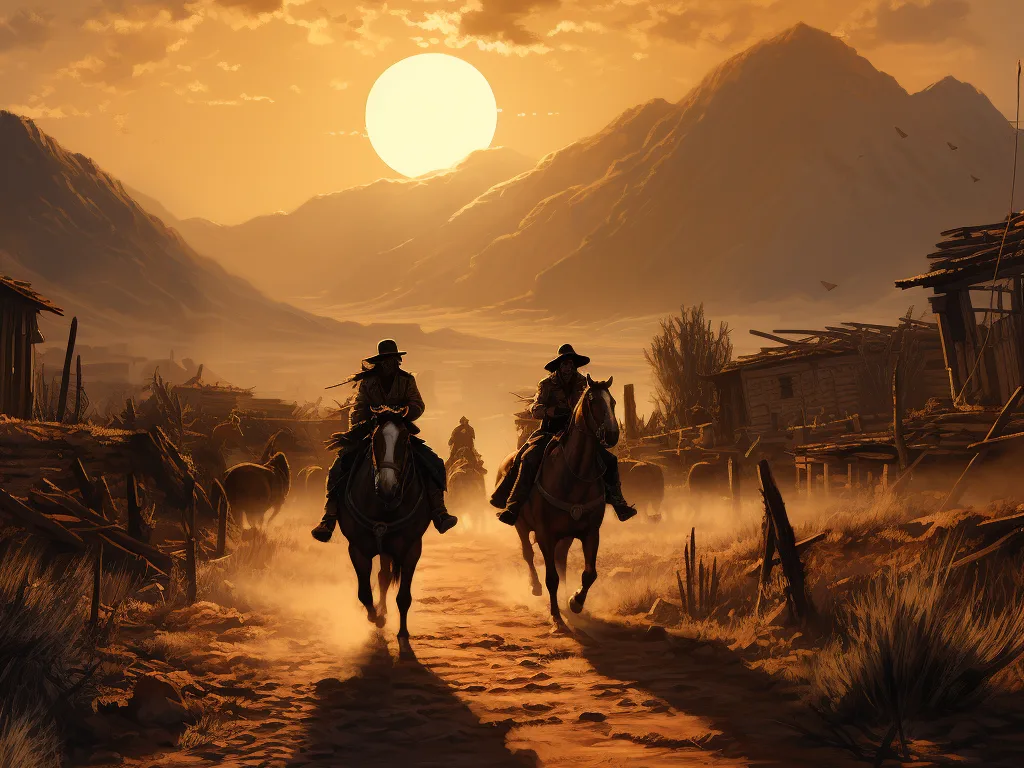Walter listened and believed.
His teenage eyes were wide-open. His mind captured the tales of the Wild West told by Grandma Rosamond and Uncle John. These weren’t whoppers written by Ned Buntline. These were stories they lived.
Grandma Rosamond, with teary eyes and quivering lips, talked about their prosperous cotton farm in Texas that was ground to dust by the Civil War and that cursed Union blockade. When the War was over, so was the cotton industry. Dixie was no longer the Land of Cotton. It was now the Land of Poverty, Despair and Yankee Carpet Baggers. Rosamond and her family looked West, to a new land of opportunity, where they could still live with like-minded folks, “Little Texas,” California. The four-month wagon train journey was over land populated by scorpions, coyotes, rattlesnakes and marauding Indians. The evidence of struggle lay on both sides of the trail; abandoned furniture marked by the tears of a heartbroken wife and mother; machinery that would have provided a living, but was dead weight on the trail; the bleached bones of horses, mules and oxen, outlining their final gasp for life; but worst of all…the small, bleached, cracked, wooden crosses, each marking the end of a new beginning. Every pioneer in that wagon train had a story to tell and Rosamond heard most of them. Later, in San Bernardino, a widowed Rosamond opened a boarding house. Away from the saloons, brothels and gambling parlors, Rosamond’s Star House provided a safe haven for the cowboys, lumberjacks and miners who were her customers. Rosamond was friendly. She liked talking with her boarders and they liked sharing their incredible stories of the Wild West with her.
Uncle John was the sheriff of San Bernardino County and a detective for the Santa Fe Railroad. He lived in a world of bandits, rustlers, robbers, kidnappers, killers and others that had a “lack of respect for the law.” He looked like a western sheriff; tall, muscular, bearded, a silver star on his chest, a Stetson hat on his head and an ivory handled Colt 45, popularly known as the Peacemaker, at his side. Besides keeping the peace, Uncle John also proved to be a savvy investor, grubstaking the Silver King Mine in Calico, one of California’s most successful. Calico would eventually play a significant role in the Walter Knott story. Uncle John had a jailhouse load of stories he loved to share in his deep, gravelly voice with young men looking for adventure, like Walter.
These stories and others created in Walter an enthusiasm for the Wild West that later expressed itself in Ghost Town at Knott’s Berry Farm. They also molded a boy into a man of faith, optimism, patriotism and perseverance.
ELGIN CHARLES KNOTT, WALTER’S FATHER
Walter’s father, now present only in memories and family stories, would have been proud of his son. He also had faith, optimism, patriotism and perseverance. Elgin Charles Knott was born on February 24, 1859 in Bell Buckle, Tennessee two years before the Civil War scarred and bloodied the countryside. Bell Buckle was only 3.5 miles from the area’s best-known Civil War engagement, The Battle of Liberty Gap, June 24 – 26, 1863. The townspeople could hear the rifle fire and the screams of the dying. General Braxton Bragg of the Confederate Army of Tennessee and Major General William S. Rosecrans of the Union Army of the Cumberland fought for control of Middle Tennessee. Bragg lost the battle. The Confederacy lost the war.
Elgin was the youngest son of William S. “Buck” Knott and Martha Ann Knott (née Rowland). His mother’s family were strong Methodists, which explains Elgin’s calling. In the late 1870s, Elgin, bright and studious, attended Vanderbilt University in Nashville, Tennessee. The University was founded in 1873 after Southern Methodist bishop Holland N. McTyeire shared his vision of a Southern university with railroad and shipping tycoon Cornelius Vanderbilt. It didn’t hurt that Vanderbilt was the richest man in America and a distant relative. McTyeire’s timing was good. Vanderbilt, at 79, was concerned about his legacy and mending the wounds of the Civil War. The “Commodore” provided an endowment of $1 million. Ironically, this was also the value of the steamship USS Vanderbilt, gifted to the Union Navy during the Civil War. The account was now balanced. With diploma in hand, passion for ministry strong, but health weak from exhausting hours poring over textbooks and preparing for exams, his doctors, fearing he might have tuberculosis, recommended he move west to California. There the air was warm, the sky was blue, the climate dry, the sun plentiful, medicine for a sick body and encouragement for an ambitious young ordained minister. In 1880, Elgin boarded a train heading west to the “promised land.” He was hired as a night desk clerk at “Dr. Rogers’ Hydropathic Sanitarium and Congenial Home” in Santa Fe Warm Mineral Springs, California.
It is unknown whether Elgin dipped his toes in the mineral hot springs or benefited from any of the pleasant treatments. His health did improve and he was ready to again heed his calling. Unfortunately, his calling had to be patient while his pocketbook demanded attention. He was educated and scholarly, a rarity in 1880s America and a celebrated hire for a school in Downey, California looking for a teacher.
Continued in Episode 2: REAL ESTATE TUMBLED AND SO DID ELGIN.

